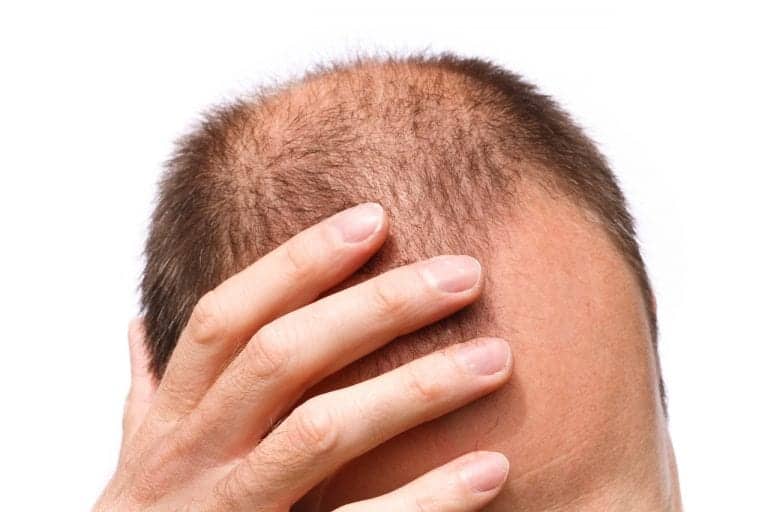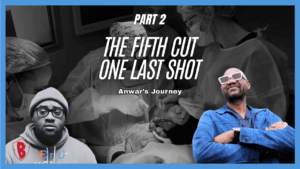Since hair transplant began to take off as a procedure in the 80s, it has seen many changes. Perhaps the most significant was the shift away from scalpels and sutures toward less invasive methods. In the interim, however, and even in the period following the general standard of follicular unit excision (FUE), many men have noticed the consequences of older, outdated hair transplant procedures in the form of odd balding patterns, scarring, and other scalp-related disfigurements. These men now wonder how to fix hair transplant scars — and could very well have reservations about undergoing another procedure. In this article, we’ve compiled a list of tips to help make more informed decisions.
How to Fix Hair Transplant Scars Non-Surgically
Before looking into surgical procedures to fix hair transplant results, its typical for men to look at more cosmetic options. Here are the top two, and some do’s-and-don’ts about approaching them.

Hair Transplant Cover Up With Hair Pieces
Hair pieces have a somewhat messy history in the field of non-surgical hair restoration. This is because, in the past, hair pieces were often easy to spot. Higher-quality hair pieces can more closely resemble human hair, and when properly taken care of, can be minimally styled. The key to an effective hair transplant cover up with a toupee or wig is to err on the conservative side to avoid drawing unwanted attention, and also to find the closest match to your natural hair as possible.
An obvious drawback to using this cover-up method is its daily maintenance. Wigs and hairpieces must be taken off and on every day and may require re-adjusting throughout the day.
Hats To Cover Bad Hair Transplant Scars
Increasingly, more and more men are forgoing hair pieces and choosing to wear hats to cover bad hair transplant scars. This opens more possibilities in terms of daily outfit choices but also presents the problem of appropriate attire. Most professional settings frown upon hats such as snapbacks, beanies, and baseball caps being worn indoors. Additionally, there is also the potential for hats to blow away with the wind or otherwise be removed, leaving hair transplant scars and bald spots exposed.

Hats, like hairpieces, are often adopted as a temporary cover-up. However, many men believe that these measures are the most realistic options given the extent of scarring from previous surgeries or even scarring accidents. In fact, this UK man thought he would have to wear a hairpiece or hat to his wedding after a car crash left him with severe scalp deformities. However, thanks to an FUE hair restoration procedure, he was able to enjoy his special day without worrying about his hair.
Fixing Bad Hair Transplant Scars With FUE Surgery
The thought of undergoing hair transplant surgery, especially after living with the results of a botched procedure, can be understandably daunting. This is why prior research is paramount when considering a bad hair transplant repair procedure. At the Dr. U Hair Clinic, we recommend looking at a clinic’s results gallery for photos and videos to get a sense of the results they can produce.

It can also be helpful to learn about the method and tools used, as new advancements in FUE hair transplant technology, such as the Dr.UGraft™ System, can enable previously unprecedented repairs. One such example is this Los Angeles man who suffered for years with extensive scarring and shame about his scalp deformations before taking advantage of a Dr.UGraft repair using body hair.
Video: Linear Scar Free Hair Transplant With Dr.UGraft Repairs Years of Mistakes
Watch the video below to see how this Los Angeles man was able to regain a normal cosmetic appearance with the help of a Dr.UGraft™ repair procedure. Previous procedures at other clinics left him with several scalp deformities, including crown slot formation, strip scars, and juri-flap scars. As Dr. Umar (aka Dr. U) observes in a study published in Facial Plastic Surgery Clinics, body hair can be used by itself or in combination with head hair for severe hair loss cases. This case required the former, due to the sheer scope of reconstruction.
Consult with Dr. U online for free today! Use the button below to get started.
Frequently Asked Questions – How to Fix Hair Transplant Scars Without Making it Obvious
I had an FUE hair transplant and now people keep staring at my hairline. Why is this happening?
Some patients, even those who have undergone procedures at other clinics which were technically a success by the standards of procedure, notice unwanted attention toward their hairline. This is because basic approaches to FUE hair transplant are limited to taking donor hair follicles from the back of the head. Hair in this area is naturally thicker in caliber, which can look harsh next to the naturally soft hair found along the hairline.
To avoid this outcome, Dr. U makes use of non-head hair, such as the hair on the nape of the neck, or even leg hair, to create softer hairlines. He is able to do this using the Dr.UGraft system, more specifically the Intelligent Punch™ (Dr.UPunch i™).
Is there a scar-free hair transplant procedure to fix the previous scarring?
All surgeries will result in scarring; however, with advancements in hair transplant technology comes similar improvements in minimizing the visibility of such wounds. Already, FUE surgery is a step up in terms of avoid the linear scar on the back of the head that is a tell-tale sign of a Follicular Unit Strip Surgery (FUSS). With the flared tip of the Intelligent Punch™, the small, circular wounds created in the donor are encouraged to heal flatter and smaller. Many patients feel comfortable wearing short haircuts once again after such procedures.
Is it necessary to use body hair to fix hair transplant scars?
Often, in cases of hair transplant cover up procedures, previous surgeries have already depleted the donor area on the back of the head. For such cases, conventional approaches will not be very effective, since both FUSS and basic FUE tools are suited for this area of the scalp. Therefore body hair is usually required to provide sufficient coverage; the Intelligent Punch™ (Dr.UPunch i™) is able to safely extract donor hair from all hair locations using patented and non-patented graft grip, pull, score, and release mechanisms.
Have more questions about how to fix a hair transplant scar? Use the button below to ask Dr. U.
Further Reading
Find out what qualities to look for in a hair transplant repair doctor.




